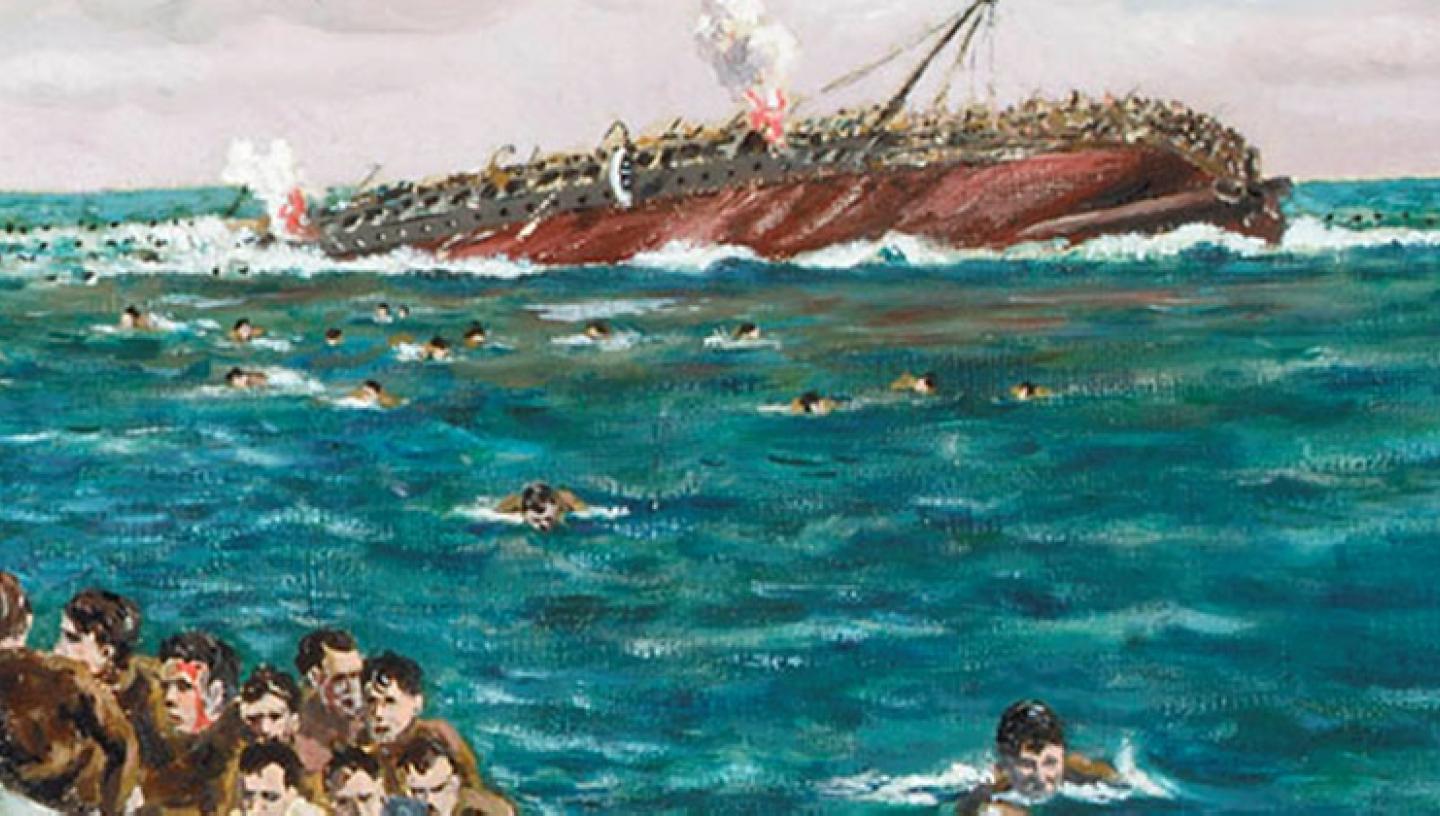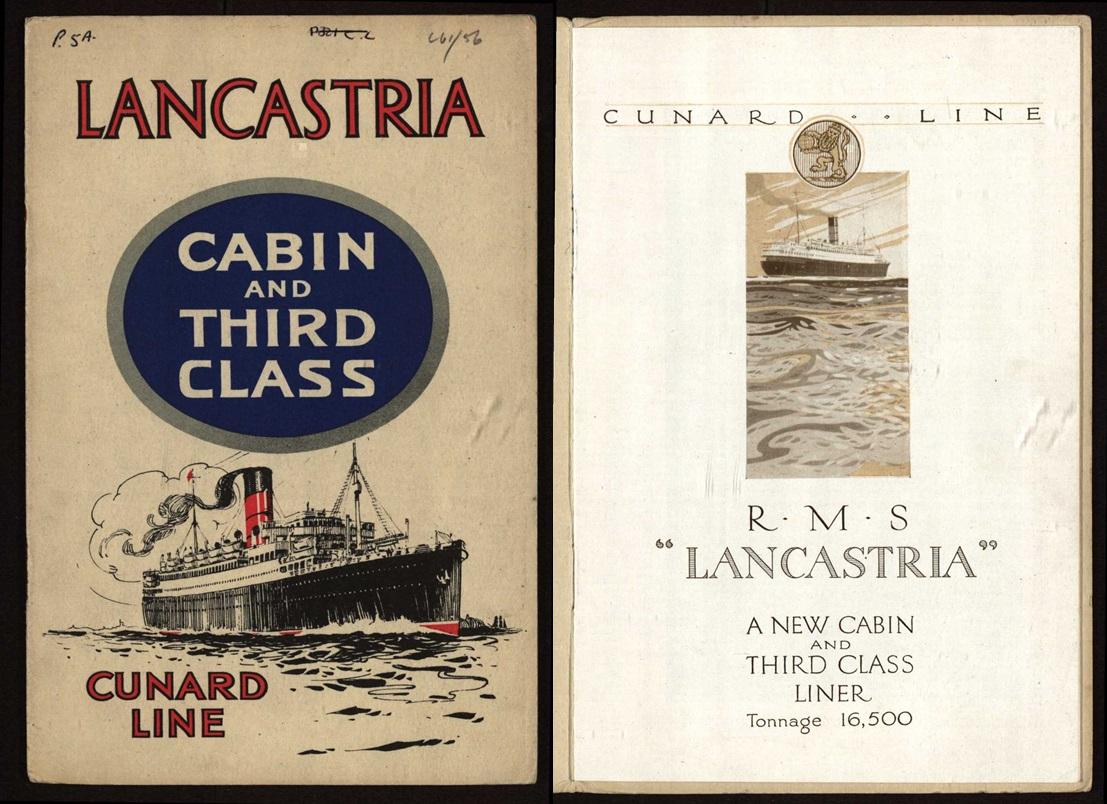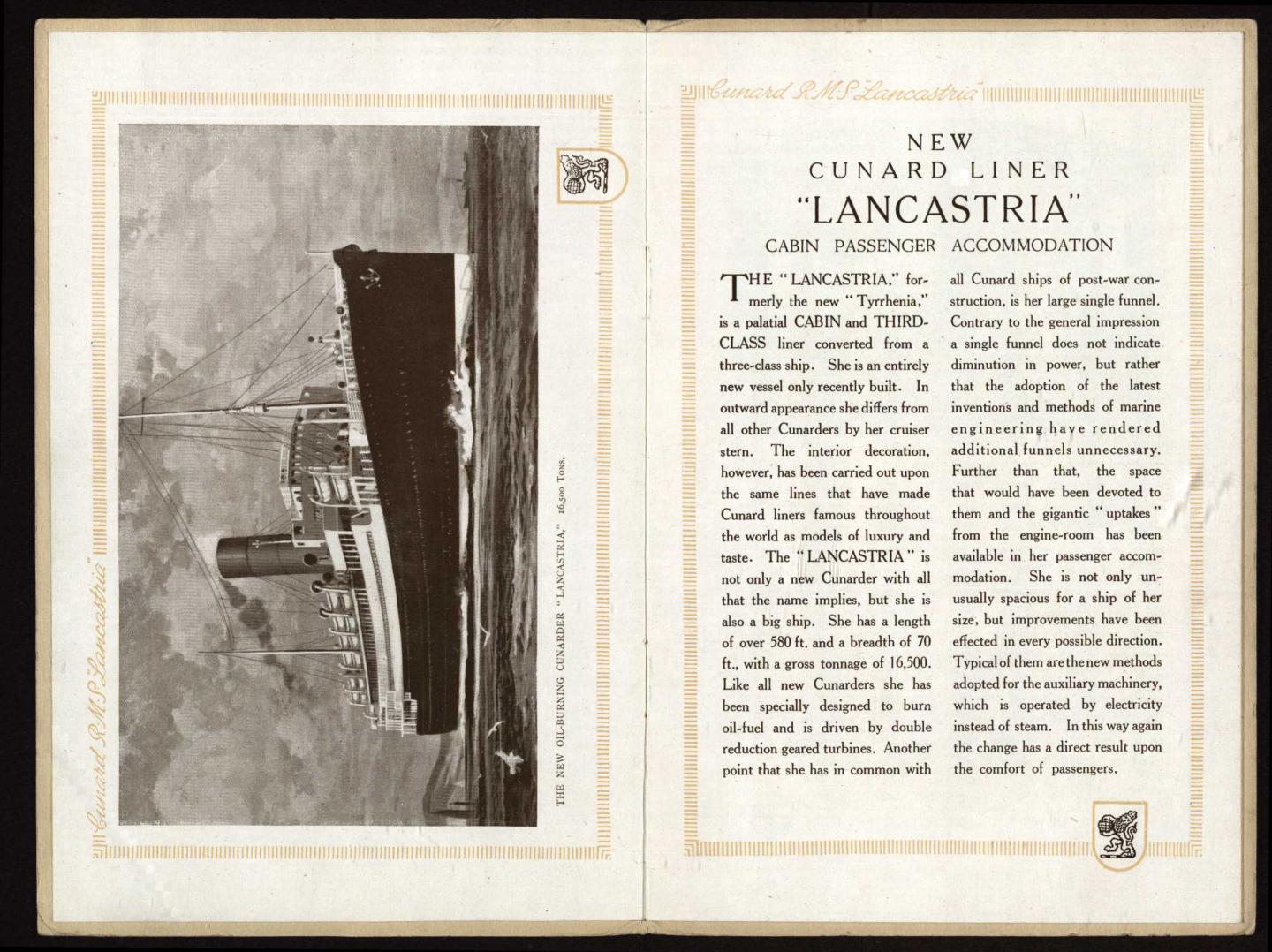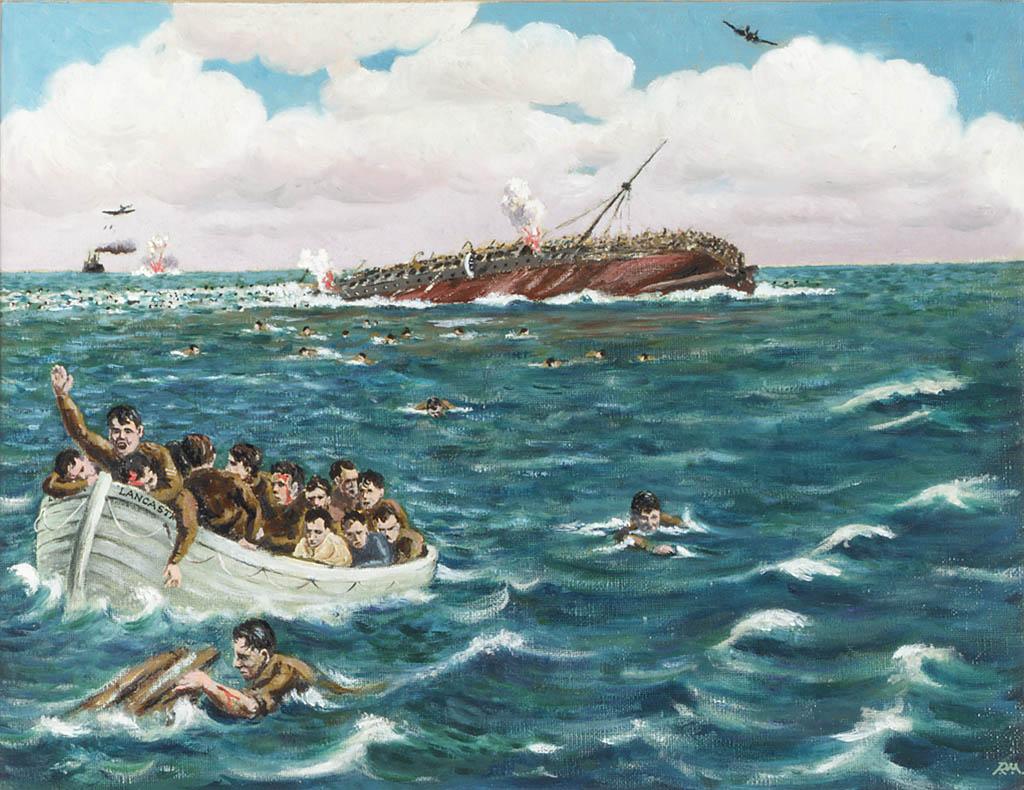
04 Dec 2017
Contrary to popular belief, the Titanic disaster of 1912 was not Britain’s greatest loss of life at sea. The Lancastria disaster of 1940 is the most catastrophic loss recorded, see our following story of the event.
This month we take a look an item from the ephemera collection, a brochure for the Cunard liner RMS Lancastria. Ephemera is material of a non-permanent nature: menus, tickets, postcards, etc. The Archive and Library hold an extensive volume of material within the ephemera collection which is presently in the process of being catalogued as part of a volunteer project. The majority of ephemera items are not regarded as collectables, however, many people retain such items as a souvenir of an occasion or event in their life. This brochure (RMG ID: PEB1003) is a memento of a ship which was destined be involved in Britain’s greatest maritime disaster, which occurred during the Second World War on Monday 17 June 1940.

Built for the Cunard Line in 1920 as the Tyrrhenia, the ship made her maiden voyage from Glasgow to Montreal in 1922. Following a re-fit in 1924 the ship was renamed Lancastria and became a popular cruise ship in the Mediterranean and the Norwegian Fjords until her final peacetime voyage to the Bahamas. Early in the Second World War the Lancastria was engaged in transport and cargo duty, with the large capacity of the ship ideal for the transportation of numerous goods.

In 1940 Lancastria participated in Operation Aerial, the evacuation of British troops and civilians from St Nazaire and Brest. On 17 June at moorings just off St Nazaire and loaded beyond capacity, German bombers attacked the Lancastria. One bomb entered the funnel and exploded in the engine room, another destroyed the oil tanks resulting in a large oil slick which created a problem for the survivors in the water. The Lancastria half-capsized, sank within minutes, and as the ship sank there were reports of singing from the men on the upturned hull of the ship, old favourites of the day were heard, such as “Roll out the Barrel” and “There always be an England”. Estimates vary for those who perished, but figures are 4500 to 6000 lost. Many survivors in the water had not swum far enough away from the ship and were pulled under with the sinking vessel by a vortex, a suction effect created by water displacement and air being forced out of the ship. Despite the constant threat from enemy aircraft, approximately 2500 survivors were rescued.
News of the disaster was suppressed by instruction of Winston Churchill. A news blackout referred to as a D notice (Defence notice) was issued to avoid damage to British morale; Churchill decided the British public had heard enough bad news. The survivors were instructed not to speak of the Lancastria disaster; however the story became known when the American press broke the news in late July.

In 1971, the National Maritime Museum acquired an oil painting of the Lancastria sinking (RMG ID: BHC0673). The painting is titled The Sinking of the Lancastria, 17 June 1940 - By Robin W. May. May, a survivor of the event, was with the Royal Army Service Corp in 1940, responsible for transport and supplies. Following Hospital treatment, May, who encountered difficulty sleeping due to his ordeal and leg pain where he had been wounded by a bullet from a German aircraft when he was in the water, eventually returned to his employment as a draughtsman. Upon a suggestion of a friend he decided to paint the event of 17 June, and later stated he only began to fully recover when he had commenced the painting. Presently, BHC0673 is not on public display.
Find out more about the Caird Library
Colin Starkey, Library Assistant